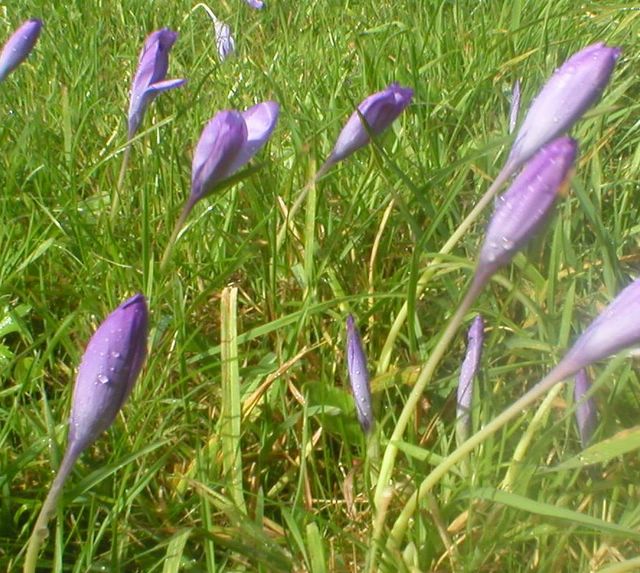Da Vinci Code - the Rochdale connection
 Since Dan Brown's zillion seller novel, The Da Vinci Code, was published, many readers are buying into this brew of conspiracy theory, romance novel and pseudo-scholarship. It provides a “thought provoking” tableaux for ersatz history, liberal use of long-debunked heresies and flashy but baseless theories on everything from church tradition to architecture to the heads of a supposed medaieval secret society.
Since Dan Brown's zillion seller novel, The Da Vinci Code, was published, many readers are buying into this brew of conspiracy theory, romance novel and pseudo-scholarship. It provides a “thought provoking” tableaux for ersatz history, liberal use of long-debunked heresies and flashy but baseless theories on everything from church tradition to architecture to the heads of a supposed medaieval secret society.
By appealing to the emotions and those wide open to belief in the Illuminati or the Truths of the Protocols of the Elders of Zion which allegedly give the key to understanding massively empowered but secret sects, he found in all this hokum a perfect marketing mix – now to made into a fillum.
Well in the green and pleasant fields (but unlikely ) fields of Rochdale, in the Pennines there is today living testimony with the Knights Templar and their crusading links with Jerusalem. (more on Templars here)The link was first proposed in the News from the Botanical Society of the British Isles by Alan Marshall, in 1991, mapping the lands of the Knights of St John of Jerusalem as detailed in the Coucher Book of Whalley Abbey, he tracked the current (then) known finds of Crocus nudiflorus the autumn flowering crocus. There are 11 sites locally, in an and around Rochdale, Heywood, Norden, Littleborough and Middleton. Every year at Lammas tide (mid August to early October) this remarkable plant, the origin of Middle east culinary saffron - (from the Arab word zafranin), an interloper in the native flora, had puzzled botanists and folklorists. How had this denizen of the Middle East ended up on the Pennine Hills ? It is now evident that on the ancient meadows, grazed for centuries, never ploughed, this pretty crocus (nudiflorus because the leaves flourish and die in the spring leaving only the flower in the autumn) was planted by the returning Crusaders as a crop to harvest the rare and very expensive saffron threads, which are the intense yellow / orange threads or stamens of the flower or culinary saffron - from the Arab word zafranin.
Every year at Lammas tide (mid August to early October) this remarkable plant, the origin of Middle east culinary saffron - (from the Arab word zafranin), an interloper in the native flora, had puzzled botanists and folklorists. How had this denizen of the Middle East ended up on the Pennine Hills ? It is now evident that on the ancient meadows, grazed for centuries, never ploughed, this pretty crocus (nudiflorus because the leaves flourish and die in the spring leaving only the flower in the autumn) was planted by the returning Crusaders as a crop to harvest the rare and very expensive saffron threads, which are the intense yellow / orange threads or stamens of the flower or culinary saffron - from the Arab word zafranin.
The active colouring ingredient is the plant carotenoid, crocin, which is unusual in that it is soluble in water, and so makes it such a handy dye for rice, bread, sausages etc., The Moslems of course conquered Spain inthe 8th century they introduced saffron , rice and sugar and incorporated the intense saffron dye in their dishes , paella, chorizo sausages etc., ( Unlike say the carotenoids in carrots, orange peel etc.,) Safranin is a bitter tasting glycoside, picrocrocin, which gives the sharp taste – and was supposed to lend the product magical aphrodisiacal powers.
Safranin is a bitter tasting glycoside, picrocrocin, which gives the sharp taste – and was supposed to lend the product magical aphrodisiacal powers.
Every year a gang of enthusiastic local botanists confirm the known ( and secret) sites but this year (today in fact) we found a new and previously unknown site only yards from a farm road , near a very busy leisure area which receives thousands of watersports enthusiasts every weekend , a very lively pub and a notorious rural “dogging car park”. Covering an area of some two tennis courts, there are many thousands of plants (Commercialy grown bulbs are available @ £1.50 each upwards)
These photographs were taken today. Imagine, these plants are the are the direct lineal descendants of bulbs planted by returning chevaliers and Crusaders in the 13th Century.

No comments:
Post a Comment